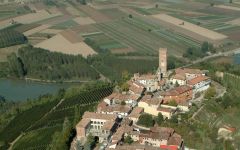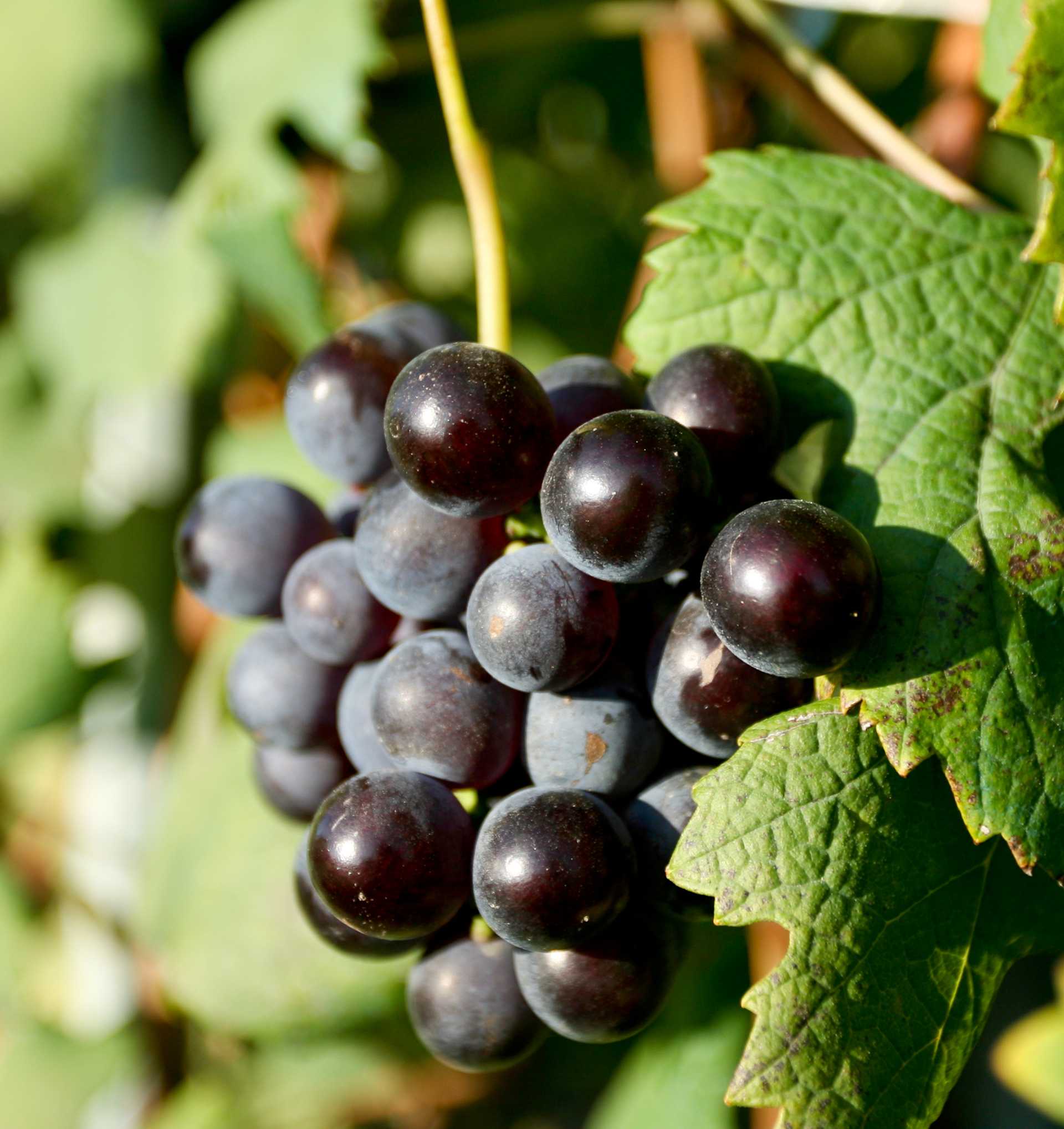Gaja Conteisa 2017
-
Jeb
Dunnuck -
James
Suckling -
Robert
Parker - Decanter
-
Wine
Spectator -
Wine
Enthusiast



Product Details
Your Rating
Somm Note
Winemaker Notes
Intense and enveloping notes, blood orange, plum, and mineral aromas. In the mouth, voluminous with sweet tannins, finishing with an inviting licorice note.
Professional Ratings
-
Jeb Dunnuck
Predominantly from within the cru of Cerequio on the border between Barolo and La Morra, Conteisa has been produced since 1996. The 2017 Barolo Conteisa has ripe aromas of red cherry, cinnamon, and licorice. The palate is forward and gushing with raspberry leather, iron-rich earth, and tobacco leaf. This is the most generous and giving of the three wines in this tasting, yet at the same time remains noble. Drink 2022-2042.
-
James Suckling
Fabulous aromas of ripe strawberry and raspberry with hazelnut and citrus follow through to a medium to full body with ultra-fine tannins and a racy and refined finish. It’s so fresh for the vintage and goes on for minutes. A classy and great wine.
-
Robert Parker's Wine Advocate
The Gaja 2017 Barolo Conteisa opes to an immediate sense of dimension and textural width that distinguishes this hot growing season. In this case, that additional volume and power are expertly contained and refined in this wine with fruit from the Cerequio vineyard of Barolo. Cerequio saw hail damage in 2016 and was more fortunate this year; however, the site generally remains quite protected from extreme weather conditions (compared to its adjacent vineyards). This wine excels most noticeably in terms of mouthfeel. The finish is silky and long and those more astringent 2017 tannins are gracefully absent here.
Rating: 95(+) -
Decanter
Gaja manages two different plots in Cerequio, from where most of the grapes for Conteisa come. Both exposures - southeast and east - mark the character of this wine. If Sperss is the Yin, Conteisa would be the Yang: It's dark fruited with black cherry and plum complemented by graceful wild herbs and mint, and a bloody, olive-like savouriness. Full-bodied and crisp, the tannins are firm, thick and dusty yet evolved.
-
Wine Spectator
Expressing balsamic aromas and flavors of soy, eucalyptus, wild thyme and tobacco, this Barolo also delivers ripe plum and cherry midpalate, with earth and tar accents rounding out the profile. Gruff tannins mark the finish, so be patient.
-
Wine Enthusiast
Aromas of French oak and roasted coffee bean lead the nose along with whiffs of pressed rose petal, eucalyptus and the barest hint of berry. The firm, full-bodied palate offers licorice, coconut, vanilla and dried cherry alongside assertive, close-grained tannins. You’ll also feel the warmth of alcohol on the close. Drink 2025–2032. Terlato Wines International.
Other Vintages
2019-
Jeb
Dunnuck - Vinous
-
Wine
Enthusiast -
Wine
Spectator -
James
Suckling
-
James
Suckling -
Robert
Parker - Decanter
-
Wine
Spectator
-
James
Suckling -
Jeb
Dunnuck -
Robert
Parker -
Wine
Spectator -
Wine
Enthusiast
-
James
Suckling -
Robert
Parker -
Wine
Enthusiast -
Wine
Spectator
-
James
Suckling -
Jeb
Dunnuck -
Robert
Parker -
Wine
Enthusiast
-
James
Suckling -
Robert
Parker -
Wine
Spectator
-
Wine
Enthusiast -
Robert
Parker -
James
Suckling -
Wine
Spectator
-
Robert
Parker -
James
Suckling -
Wine
Spectator
-
Robert
Parker -
James
Suckling -
International
Wine Cellar
-
Wine
Enthusiast -
Robert
Parker -
Wine
Spectator
-
Robert
Parker -
Wine
Spectator -
Wine &
Spirits
-
Wine
Spectator -
Robert
Parker
-
Wine
Enthusiast -
Wine
Spectator -
Robert
Parker
-
Robert
Parker -
Wine
Spectator
-
Wine
Spectator -
Robert
Parker
-
Robert
Parker -
Wine
Spectator








Perched atop a steep hill in the Langhe sits the small village of Barbaresco, home of the GAJA winery. The story of the GAJA Winery can be traced to a singular, founding purpose: to produce original wines with a sense of place which reflect the tradition and culture of those who made it. This philosophy has inspired five generations of impeccable winemaking. It started over 150 years ago when Giovanni Gaja opened a small restaurant in Barbaresco, making wine to complement the food he served. In 1859, he founded the Gaja Winery, producing some of the first wine from Piedmont to be bottled and sold outside the region. Since that time, the winery has been shaped by each generation’s hand, notably that of Clotilde Rey, Angelo Gaja’s grandmother. Her passion for uncompromising quality influenced and informed Angelo Gaja. Through Angelo, these values have become the cornerstone of the GAJA philosophy and are engrained in every aspect of wine production
In 1961, Angelo Gaja began his mission of bringing this great winery to an even higher level. He was the first to use barriques, 225-liter French oak barrels. Under his direction, GAJA pioneered the production of single-vineyard designated wines and was the first to plant Cabernet Sauvignon, Chardonnay and Sauvignon Blanc varietals in Piedmont. He was also instrumental in elevating the native Nebbiolo grape to world-class esteem.
Angelo Gaja is joined by the fifth generation of the GAJA family – his daughters Gaia and Rossana and his son Giovanni. Together they continue to advance the winery’s legacy. To fully realize their vision, all GAJA wines are produced exclusively from grapes grown in estate-owned vineyards, including 250 acres in Piedmont’s Barbaresco and Barolo districts as well as estates in Pieve Santa Restituta (Montalcino) and Ca’Marcanda (Bolgheri). It is from these storied vineyards, and their terroir – the combination of soil, weather and vines that grow upon them, that GAJA wines reveal their true heart and soul.

Responsible for some of the most elegant and age-worthy wines in the world, Nebbiolo, named for the ubiquitous autumnal fog (called nebbia in Italian), is the star variety of northern Italy’s Piedmont region. Grown throughout the area, as well as in the neighboring Valle d’Aosta and Valtellina, it reaches its highest potential in the Piedmontese villages of Barolo, Barbaresco and Roero. Outside of Italy, growers are still very much in the experimentation stage but some success has been achieved in parts of California. Somm Secret—If you’re new to Nebbiolo, start with a charming, wallet-friendly, early-drinking Langhe Nebbiolo or Nebbiolo d'Alba.

The center of the production of the world’s most exclusive and age-worthy red wines made from Nebbiolo, the Barolo wine region includes five core townships: La Morra, Monforte d’Alba, Serralunga d’Alba, Castiglione Falletto and the Barolo village itself, as well as a few outlying villages. The landscape of Barolo, characterized by prominent and castle-topped hills, is full of history and romance centered on the Nebbiolo grape. Its wines, with the signature “tar and roses” aromas, have a deceptively light garnet color but full presence on the palate and plenty of tannins and acidity. In a well-made Barolo wine, one can expect to find complexity and good evolution with notes of, for example, strawberry, cherry, plum, leather, truffle, anise, fresh and dried herbs, tobacco and violets.
There are two predominant soil types here, which distinguish Barolo from the lesser surrounding areas. Compact and fertile Tortonian sandy marls define the vineyards farthest west and at higher elevations. Typically the Barolo wines coming from this side, from La Morra and Barolo, can be approachable relatively early on in their evolution and represent the “feminine” side of Barolo, often closer in style to Barbaresco with elegant perfume and fresh fruit.
On the eastern side of the Barolo wine region, Helvetian soils of compressed sandstone and chalks are less fertile, producing wines with intense body, power and structured tannins. This more “masculine” style comes from Monforte d’Alba and Serralunga d’Alba. The township of Castiglione Falletto covers a spine with both soil types.
The best Barolo wines need 10-15 years before they are ready to drink, and can further age for several decades.
